|
Peloponnese peninsula forms an isolated geological and biological unit,
to some extent independent on the rest of the Balkan peninsula.
Peloponesse is linked with the mainland only by a narrow neck, which
ensured the development of a relatively large number of endemic species
in the past, comparable to the fauna of any mediteranean island.
Cerambycid fauna of the Peloponnese is very manifold. Common southern
species occur in quite large quantities there, as well as a relatively
wide range of strictly endemic species.
These two factors are the main reason of popularity of the Peloponnese
among European entomologists.
The goal of our trip was particularly a plateau between the cities
of Tripoli and Sparta, the Taygetos mountain range, coastal area
near Areopoli and at last, but not least, a Menalo mountain range,
about 30 km north-west of Tripoli. The typical vegetation is
represented by a Mediterranean maquis in the lower altitudes and
pastures with kermes oak (Quercus
coccifera)
bushes in the medium-altitude. The mountains are covered by
sporadically well preserved forests, composed of black pine (Pinus
nigra)
and especially Greek fir (Abies
cephalonica).
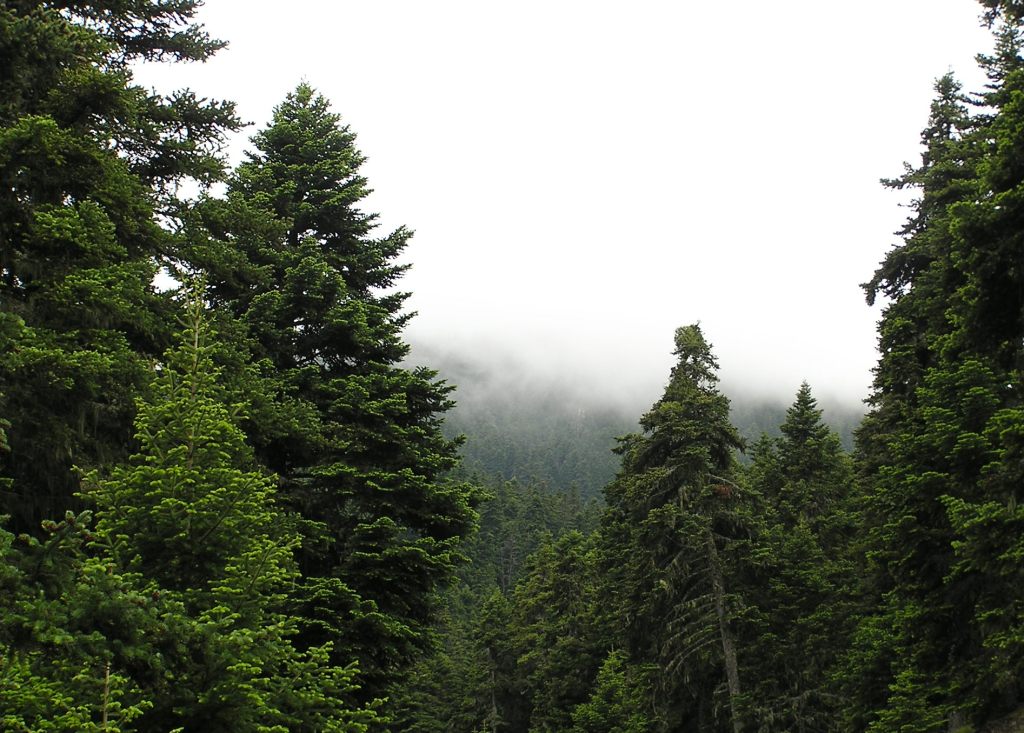
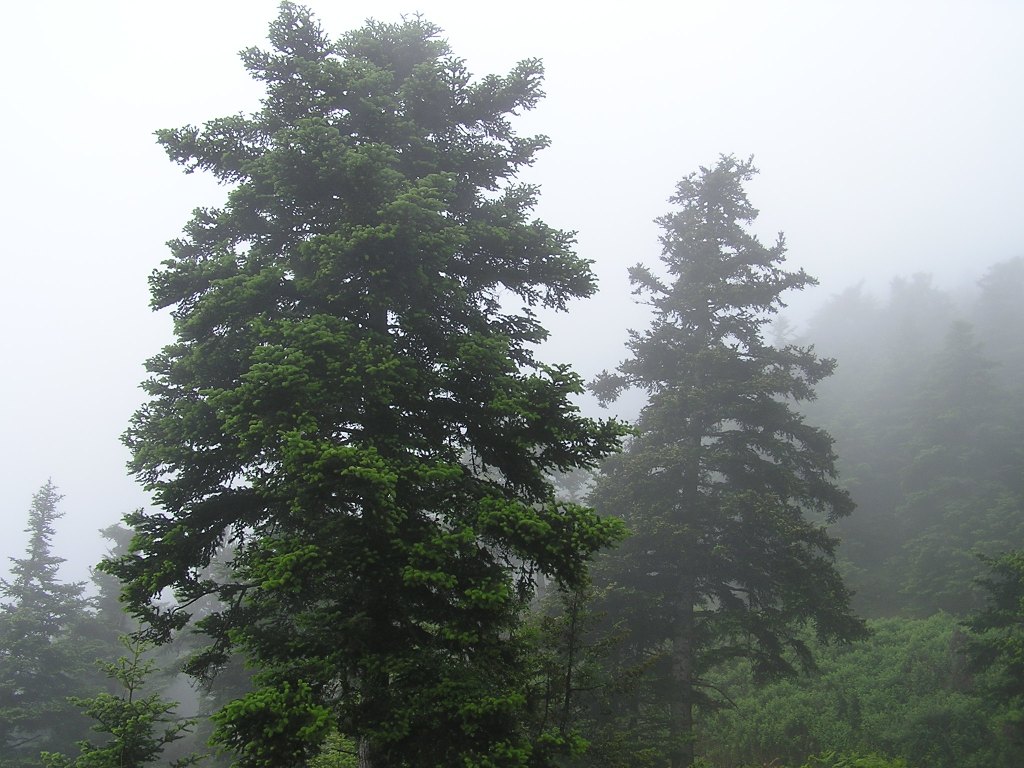
The expedition lasted 14 days.
That should be a time long enough for us to visit all major sites in the
Peloponnese without any stress.
We
have borrowed comfortable Volkswagen Polo at the airport, what proved to
be a good choice later on. We often rode on communications where other
cars of lower middle class would absolutely lose the solid ground under
theirs wheels.
Thus strengthened by the third member of our team we could dauntlessly
set off into the unfriendly mountains.
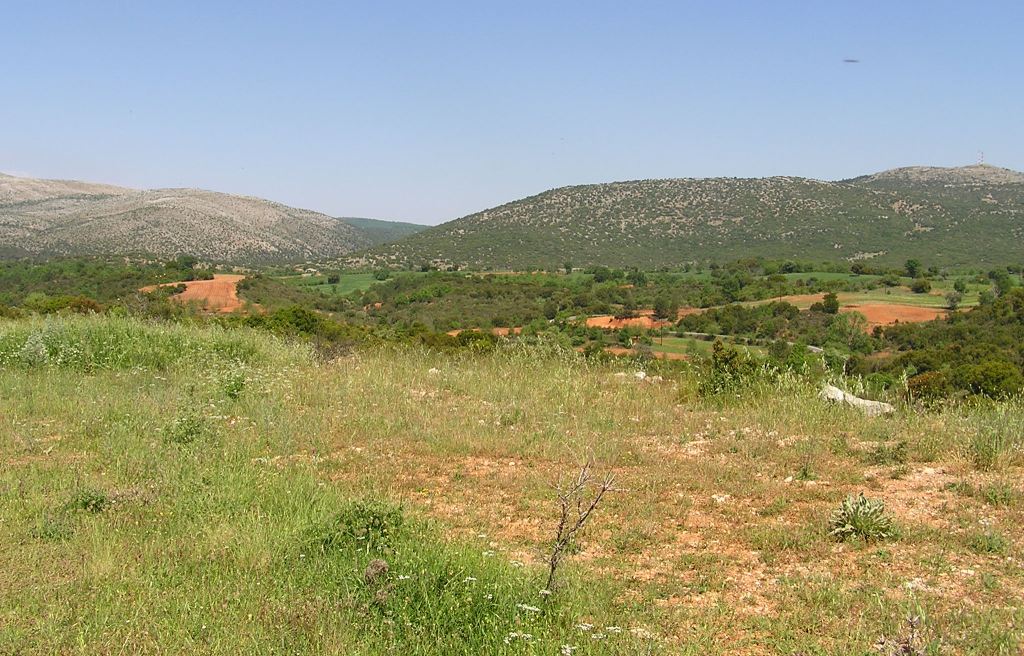
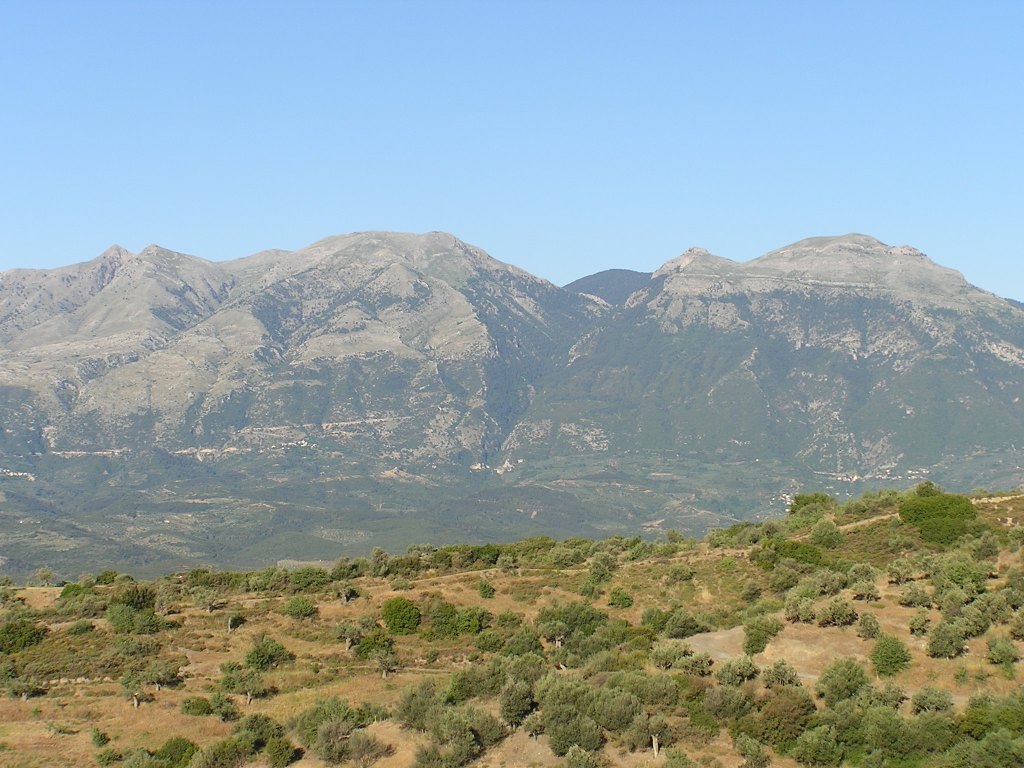
We
spent a few days on the plateau between the cities of Tripoli and Sparta
at first. This area is one of the richest places of Peloponnese in
entomological way of meaning.
We
gathered a large number of longhorns on various flowers and host plants,
together with many species of the families Buprestidae and
Scarabaeidae.
The most remarkable species were: Calchaenesthes
oblongomaculata (Guérin, 1844) ssp. oblongomaculata
(Guérin, 1844) - on kermes oak (Quercus
coccifera), Saperda quercus (Charpentier, 1825) ssp.
quercus (Charpentier, 1825)
-
also on kermes oak (Quercus coccifera), Cortodera
differens
Pic, 1898 (=
steineri
Sama, 1997) -
on
cornflower Centaurea sp., Oxylia duponcheli
(Brullé, 1832)
–
on Italian viper´s bugloss Echium italicum L. and
Pilemia
angusterufonotata
Pic, 1952 (=
inarmata Holzschuh, 1984) - on bugloss Anchusa
sp. We also managed to find Oberea taygetana Pic,
1904
and Vadonia bisignata (Brullé, 1832), both on spurge
(Euphorbia sp.). Adults of Agapanthia cynarae (Germar,
1817) ssp. cynarae (Germar, 1817) were sitting on stems of
thistles (Carduus sp.). By sweeping we were able to catch
Certallum ebulinum (Linnaeus, 1767) and
Phytoecia caerulea (Scopoli, 1772)
ssp. baccueti (Brullé, 1832)
on plants of the family Brassicaceae, next to it we have also
gathered Pilemia hirsutula (Frölich, 1793) on Phlomissp.
sp.
plants
and many other more common species of cerambycids.
Calchaenesthes oblongomaculata
(Guérin, 1844) Saperda
quercus (Charpentier, 1825)
ssp.oblongomaculata
(Guérin, 1844)
ssp. quercus (Charpentier, 1825)
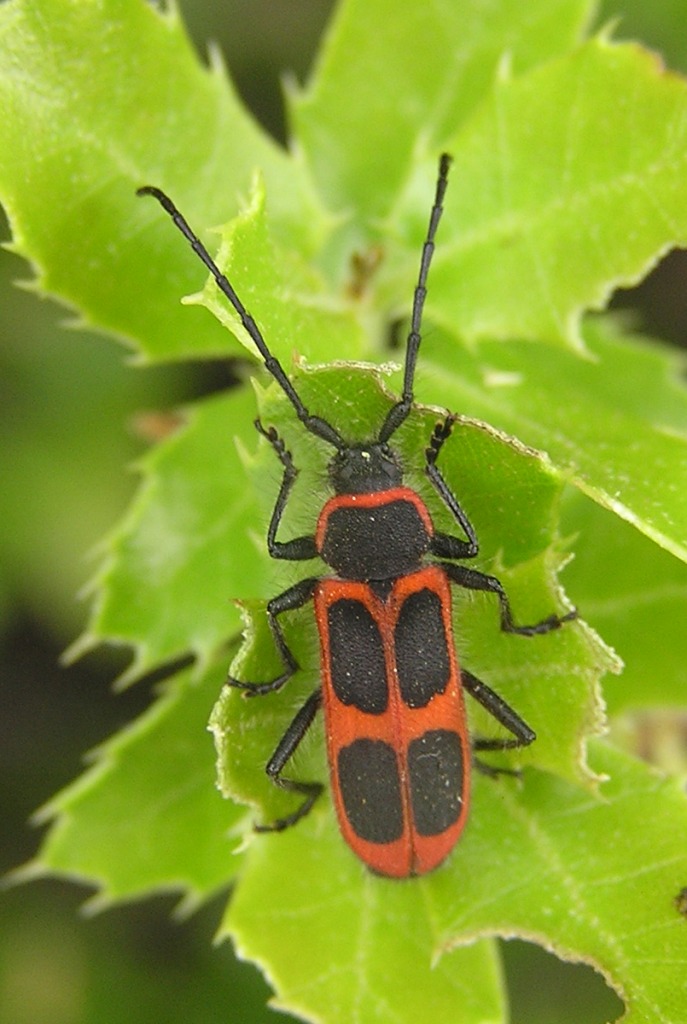
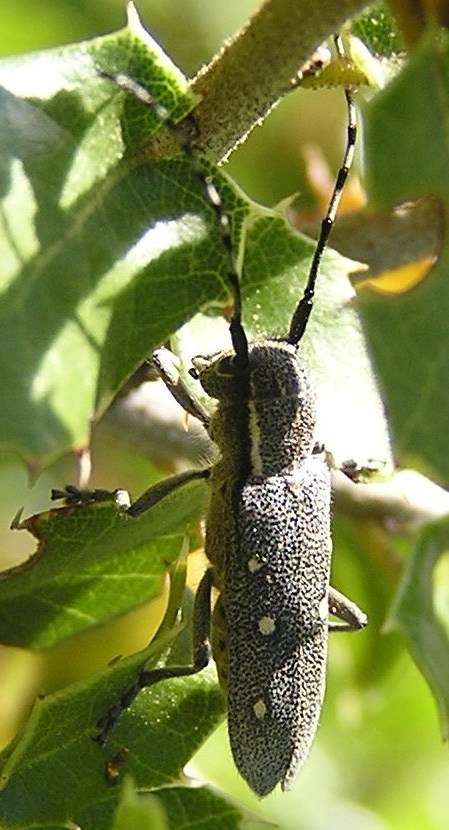
Oxylia duponcheli
(Brullé, 1832) Pilemia
angusterufonotata
Pic, 1952
Oberea taygetana
Pic, 1904
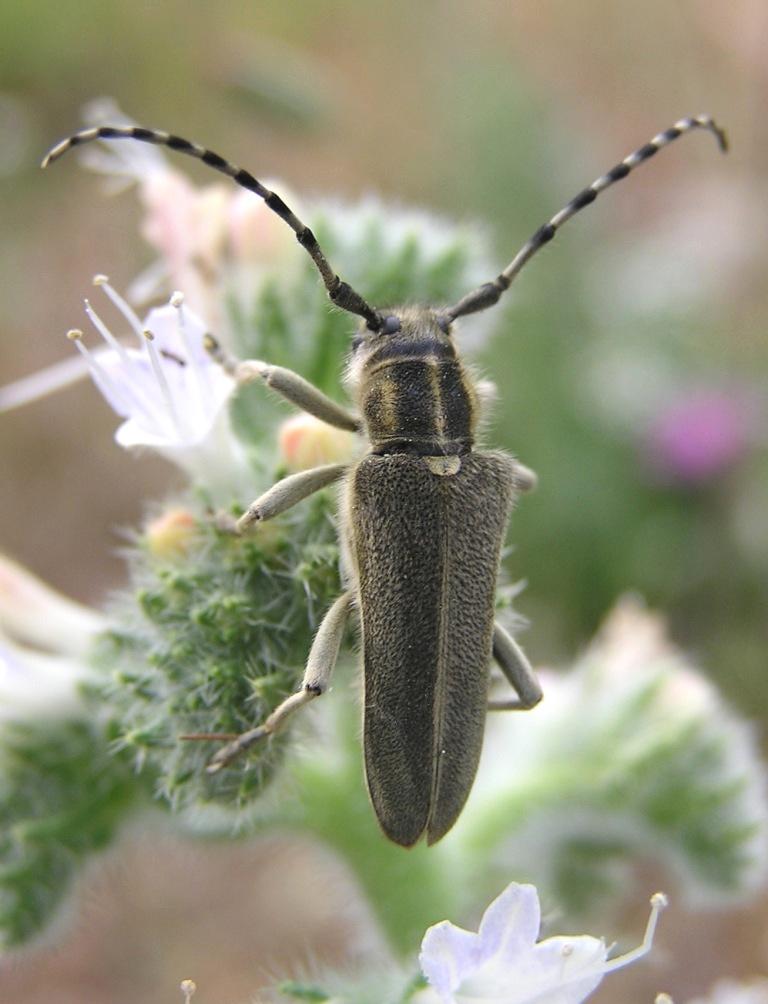
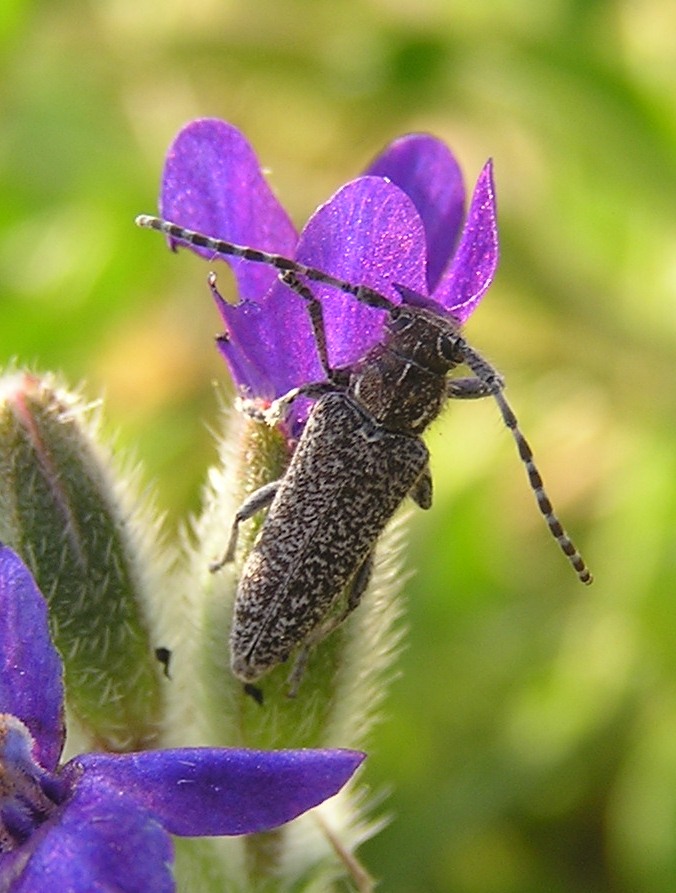
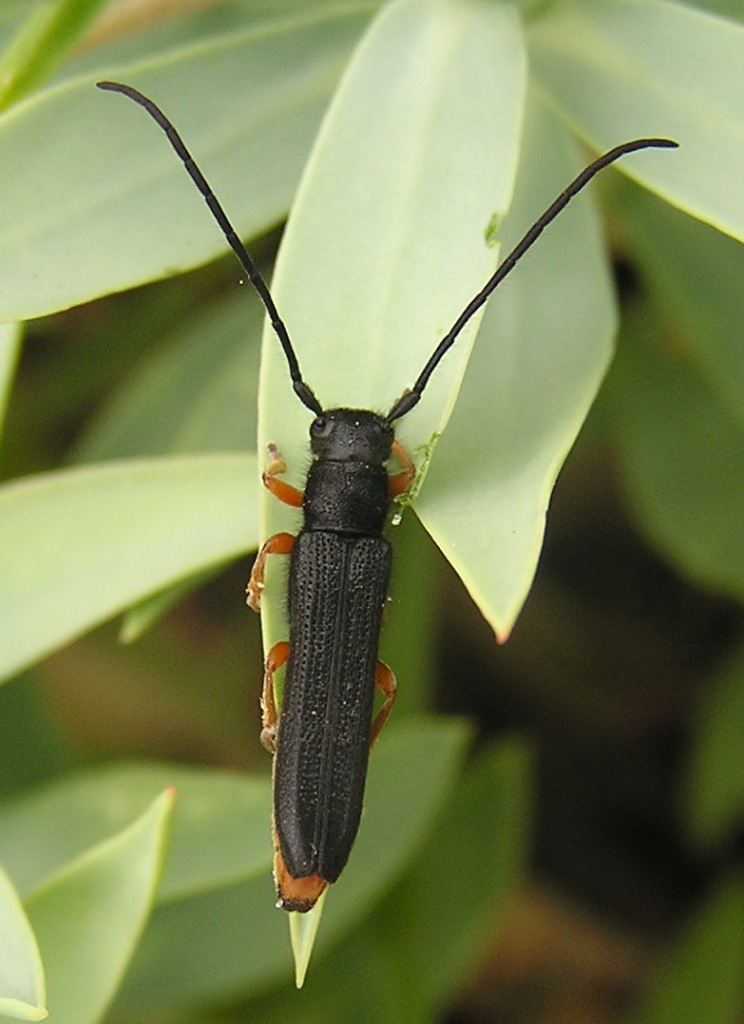
Vadonia bisignata
(Brullé, 1832)
Agapanthia cynarae
(Germar, 1817) ssp. cynarae
(Germar, 1817)
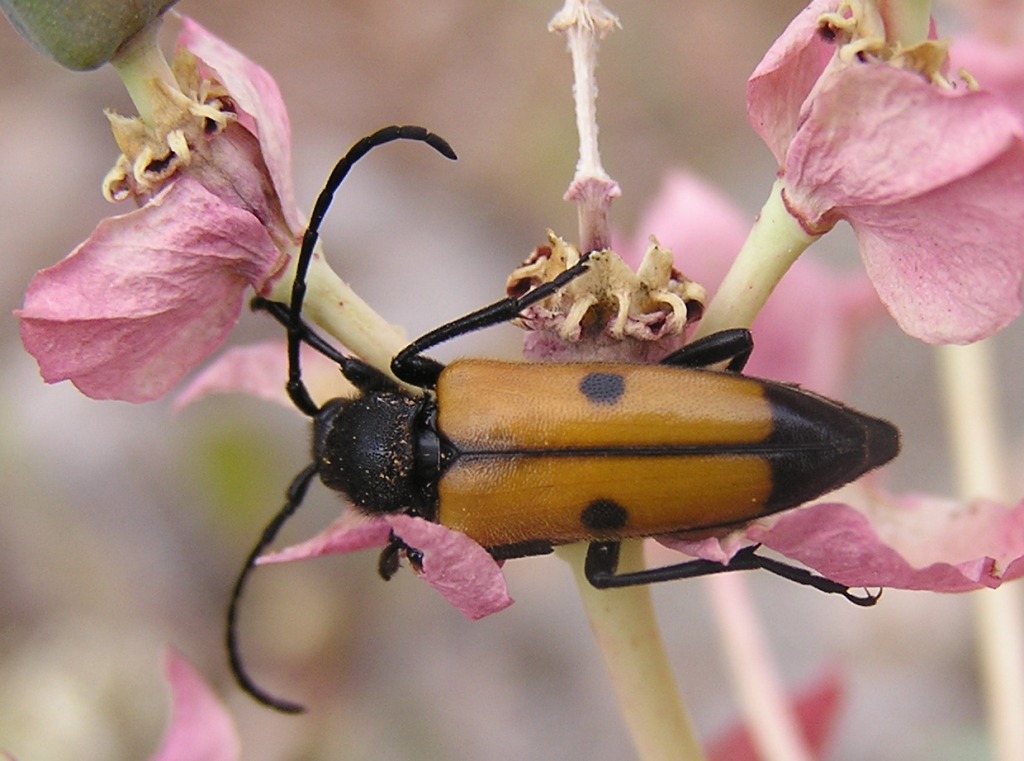
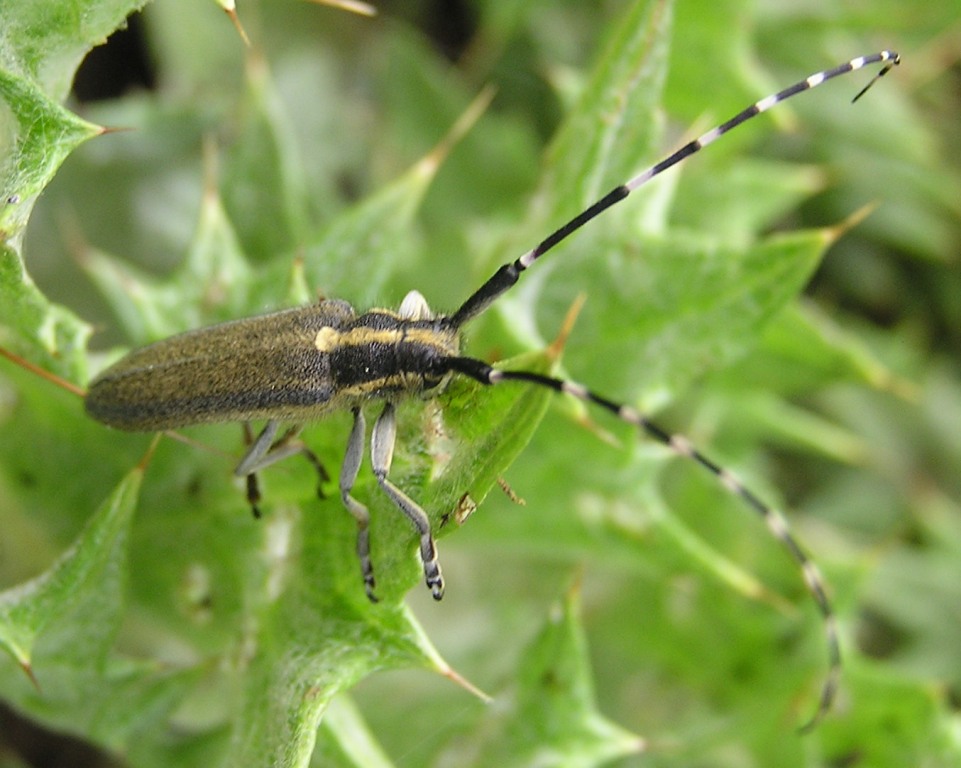
Phytoecia caerulea (Scopoli, 1772)
ssp. baccueti (Brullé, 1832)
Pilemia hirsutula (Frölich, 1793)
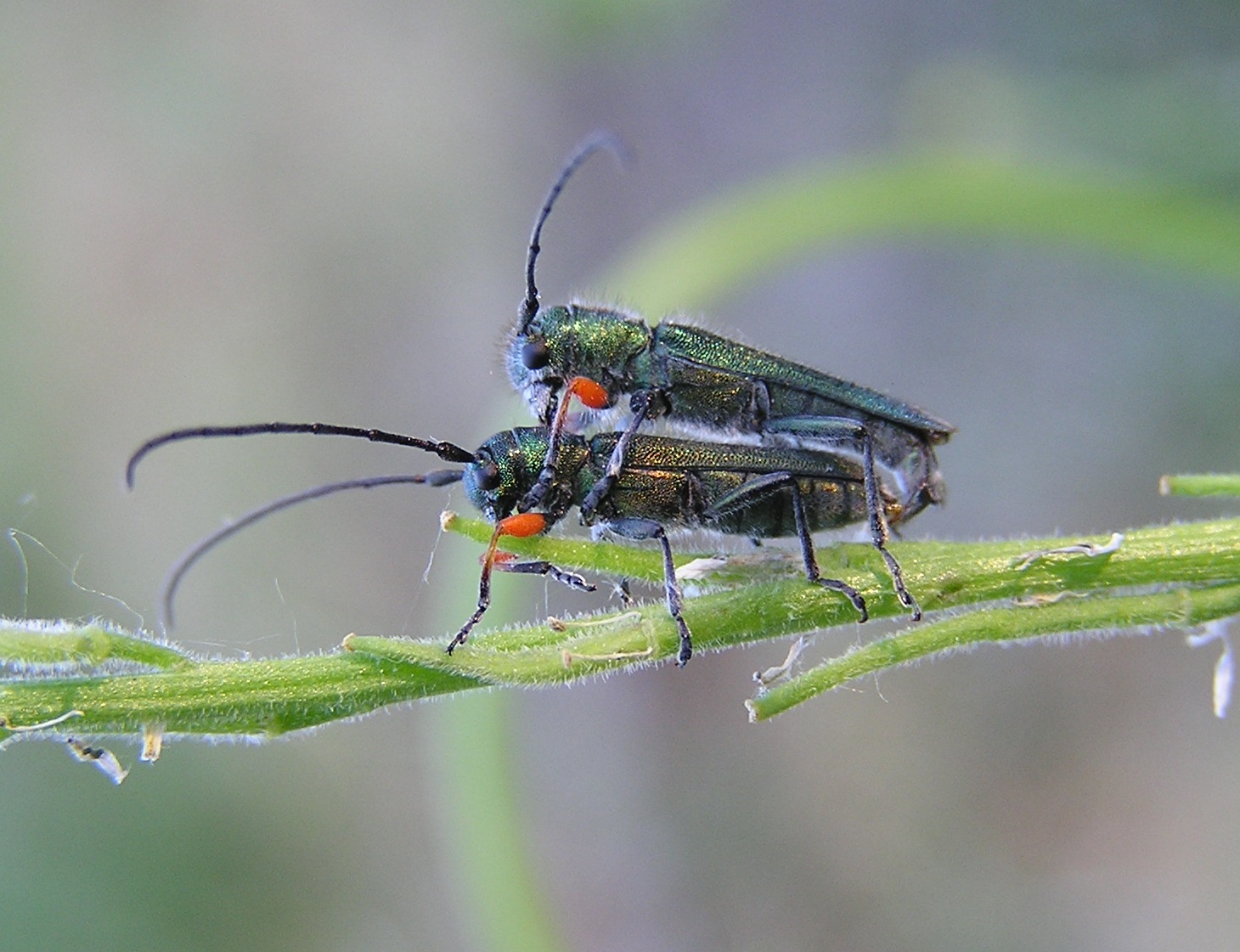
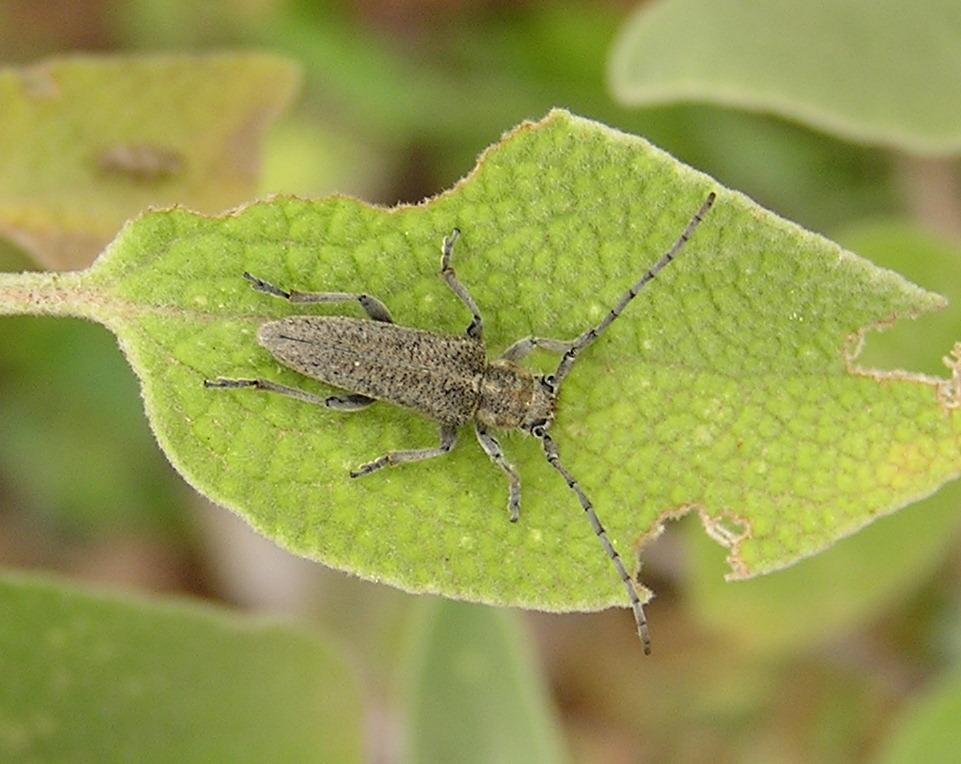
Vicinity of town Areopoli in the southern coast of peninsula was the
next, also very interesting site. Fauna of longhorn beetles was
represented by different spectrum of species there.
On
our way to this seaside location we stopped at one locality in Taygetos
mountains, where we found endemic species Helladia flavescens
(Brullé, 1832) in the vicinity of the monastery. Adults were sitting
or flying aroud their host plants – thistles. From this place we headed
straight to Areopoli.
There were the most abundant localities.On flowering Apiaceae plants and blossoming
Spanish broom (Spartium sp.) we were collecting species such as
Purpuricenus kaehleri (Linnaeus, 1758)
ssp.
kaehleri
(Linnaeus, 1758),
Purpuricenus budensis
(Götz, 1783) ssp. budensis (Götz, 1783),
Purpuricenus desfontainii (Fabricius, 1792) ssp.
desfontainii (Fabricius, 1792), Purpuricenus desfontainii
(Fabricius, 1792)
ssp.
inhumeralis
Pic, 1891, Stenopterus
flavicornis Küster, 1846, Stenopterus
rufus (Linnaeus, 1767) ssp. geniculatus
Kraatz, 1863, endemic Stenopterus atricornis Pic, 1891, as
well as Paracorymbia pallens (Brullé, 1832),
Stictoleptura cordigera (Füsslins, 1775), Clytus rhamni
Germar, 1817 ssp. rhamni Germar, 1817, Chlorophorus
sartor (Müller, 1766), Pedostrangalia verticalis (Germar,
1822)
or
Ropalopus clavipes (Fabricius, 1775).
Velvety adults of Agapanthia kirbyi (Gyllenhal, 1817)
were sitting on Mulleins (Verbascum sp.). In the vicinity of
Areopoli we found cerambycids Parmena pubescens (Dalman,
1817) ssp. pilosa Brullé, 1832, which were sitting on
their host plants - spurge Euphorbia wulfenii - at night,
while adults of endemic Parmena novaki Sama, 1997 were
still hidden in their pupal cells in dry trunks and branches of tree
spurge - Euphorbia dendroides.
Purpuricenus budensis
(Götz,
1783) Purpuricenus desfontainii
(Fabricius,1792)
ssp.
budensis
(Götz,
1783)
ssp. desfontainii
(Fabricius,1792)
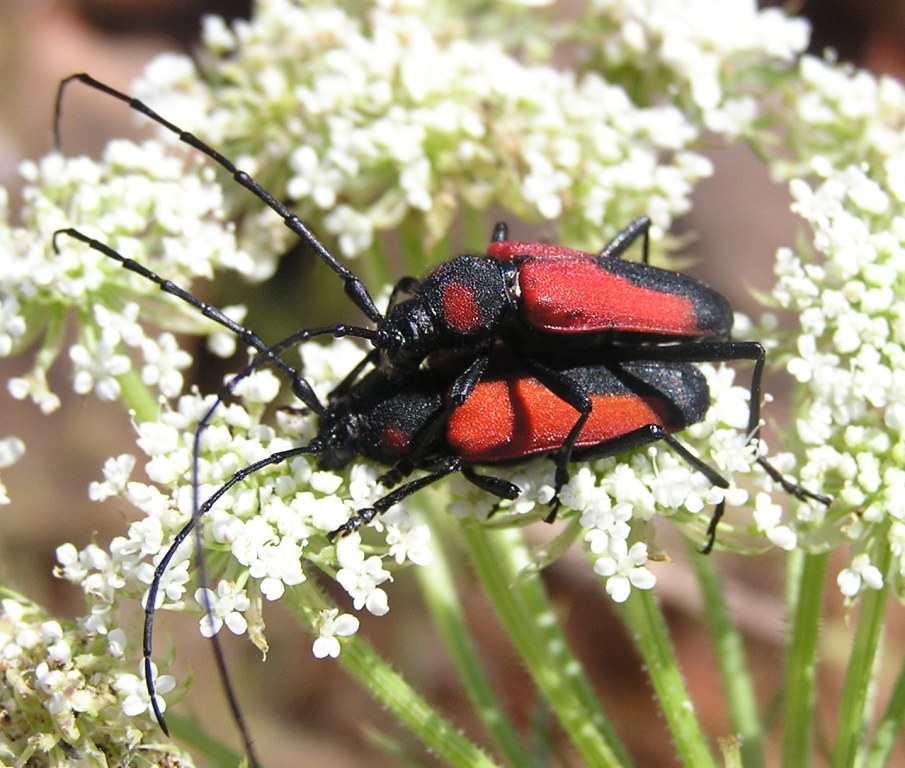
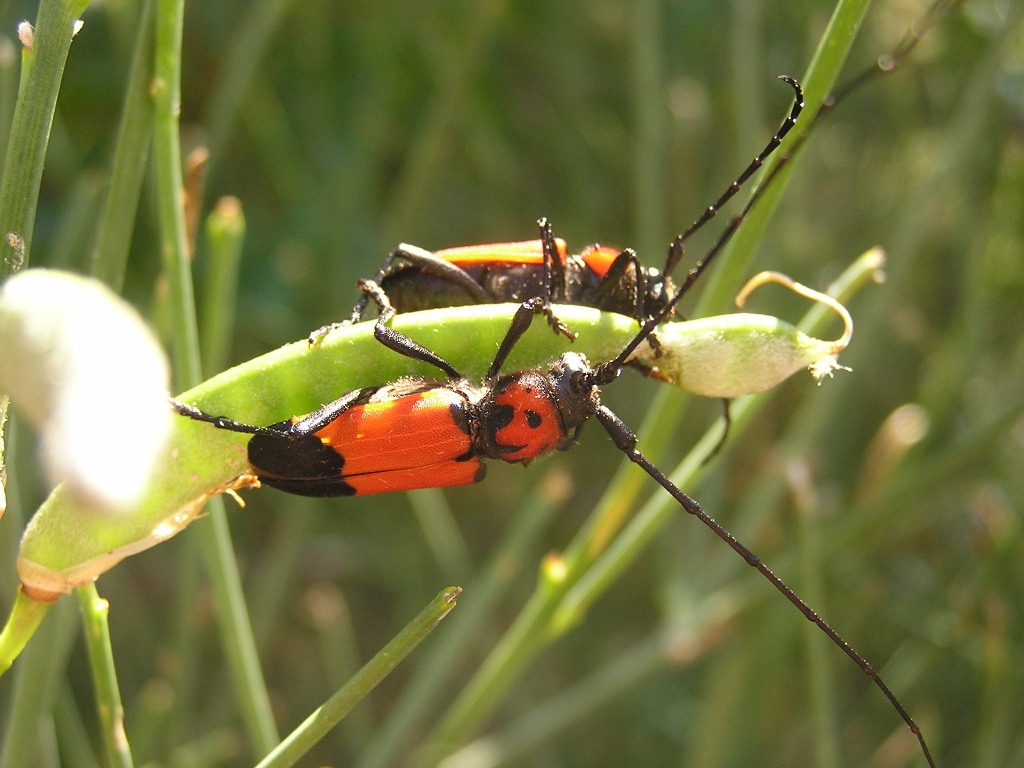
Paracorymbia pallens
(Brullé, 1832)
Pedostrangalia verticalis (Germar, 1822)
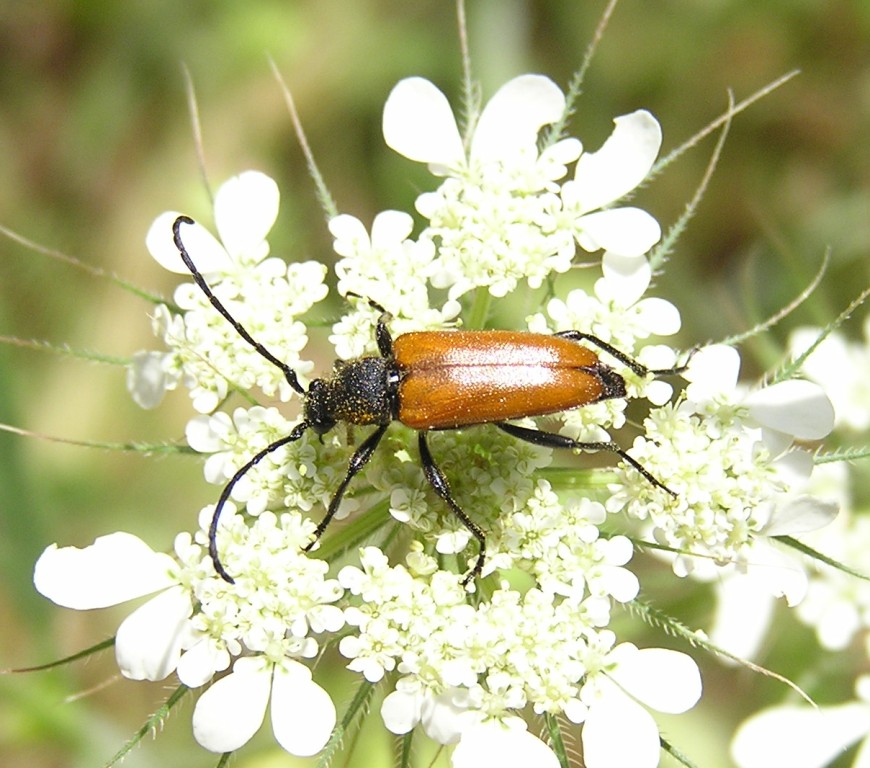
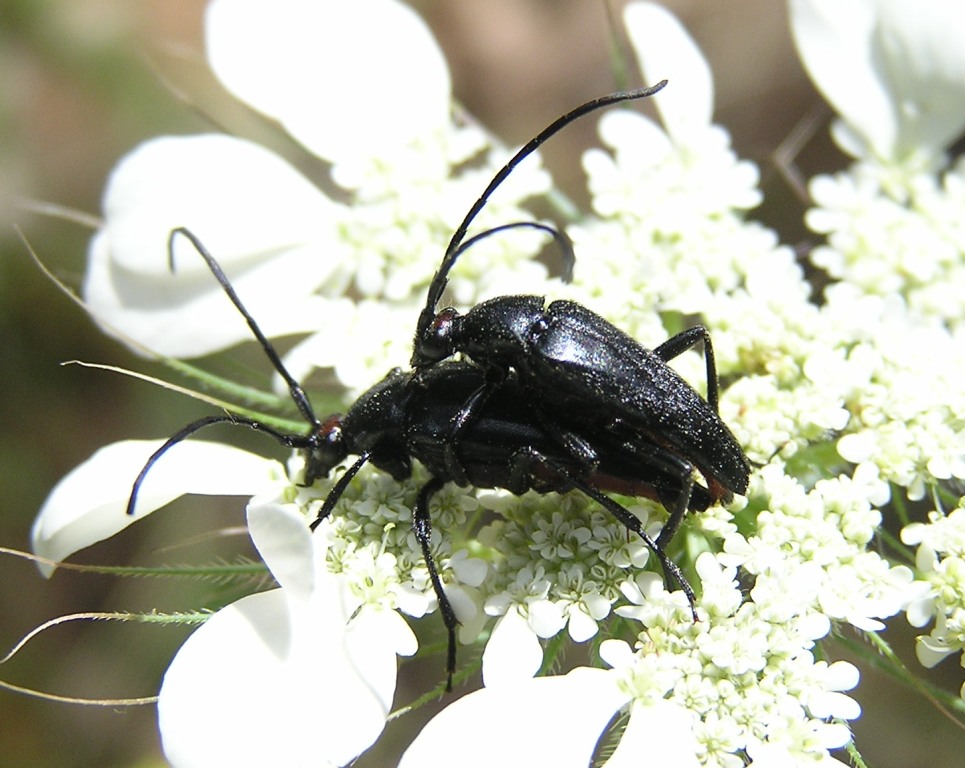
Ropalopus clavipes
(Fabricius, 1775)
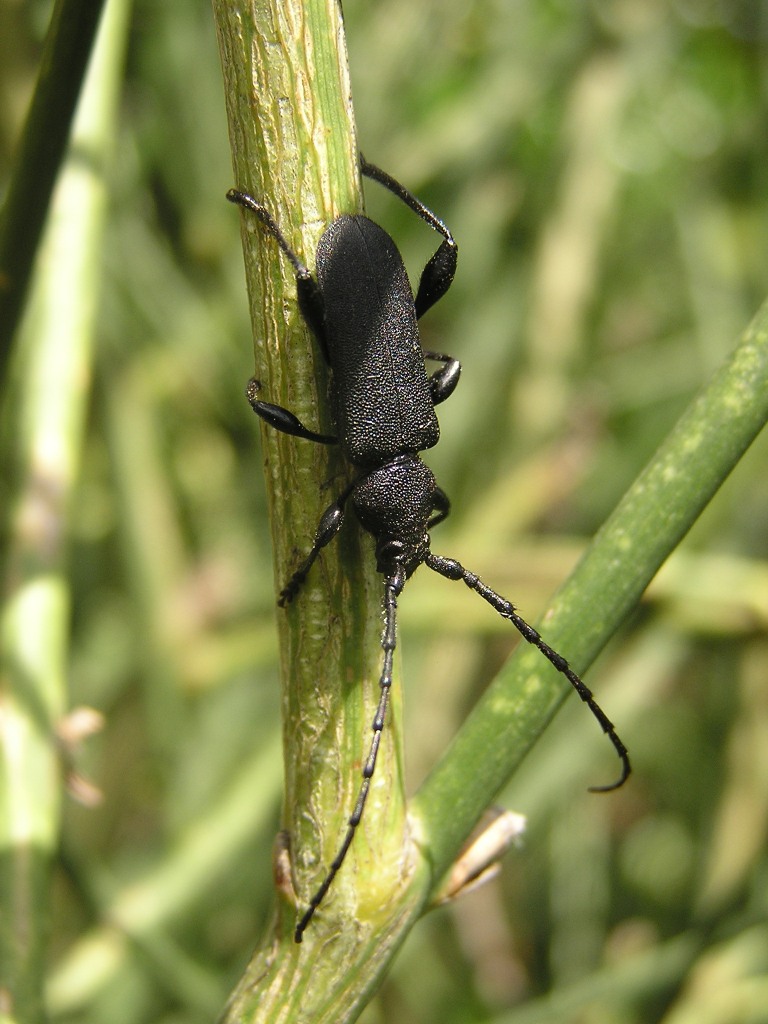
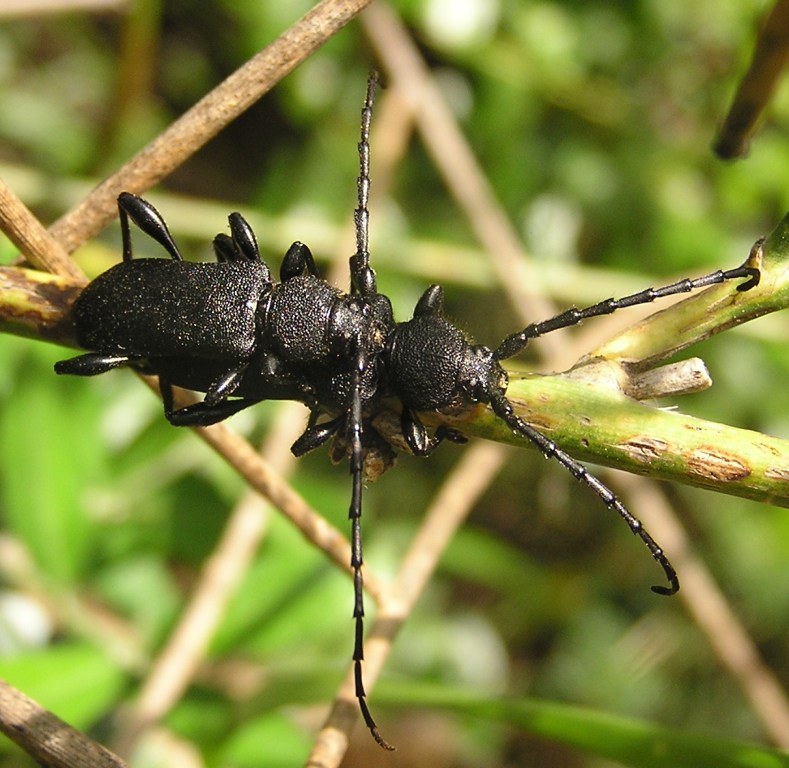
Agapanthia kirbyi
(Gyllenhal, 1817) Parmena pubescens (Dalman, 1817) ssp. pilosa Brullé,
1832
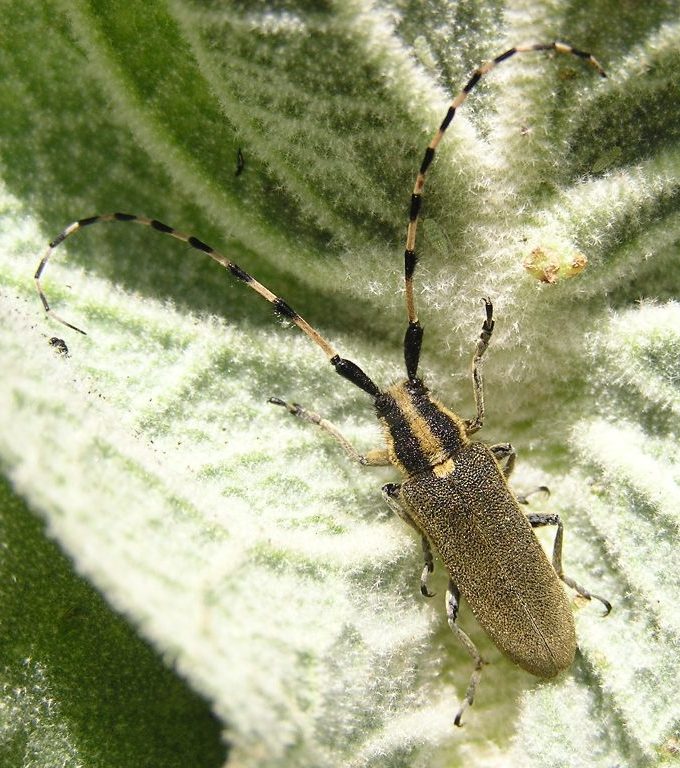 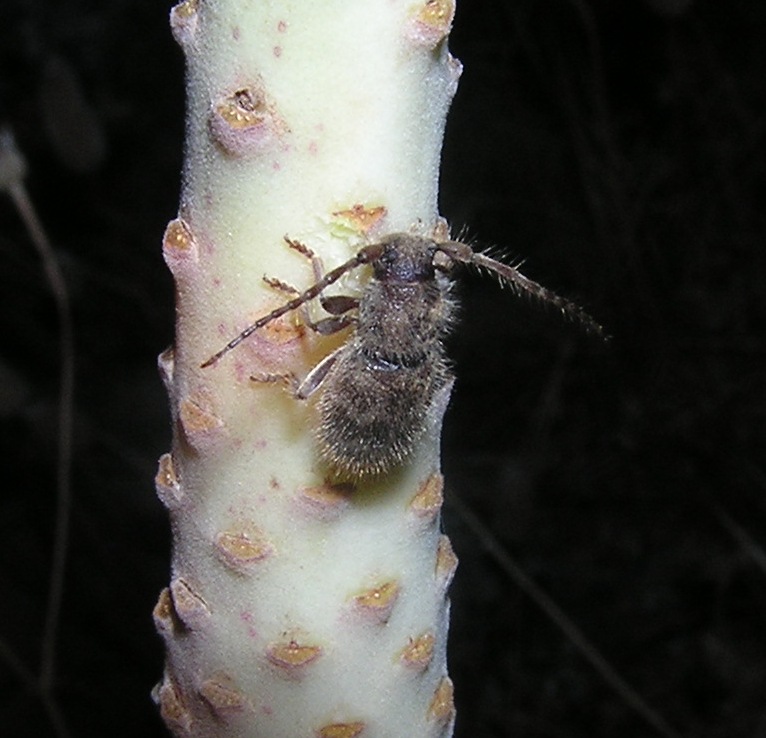
Clytus
rhamni
ssp. rhamni Germar, 1817 Stenopterus atricornis Pic, 1891
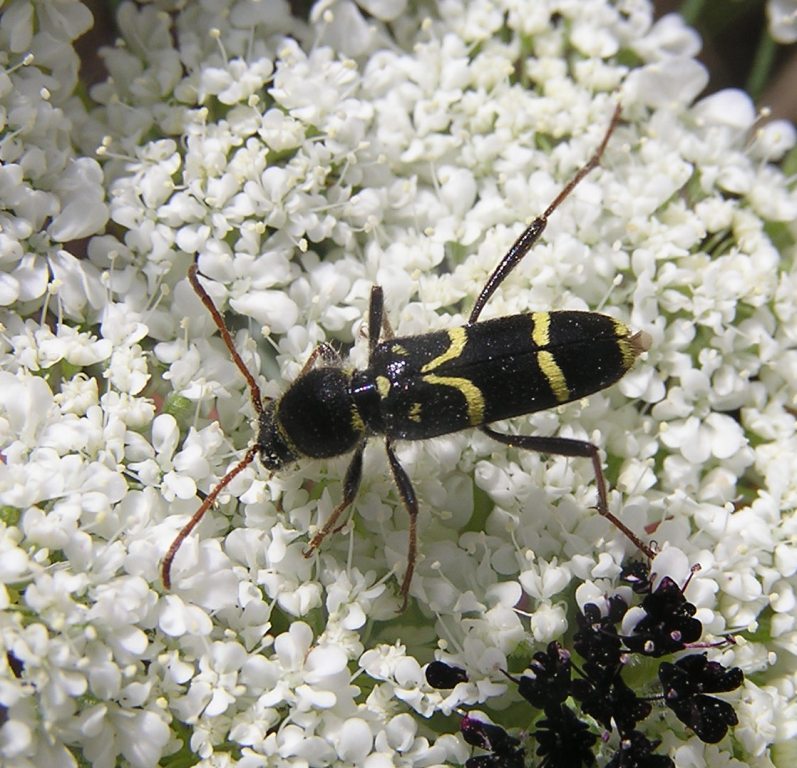
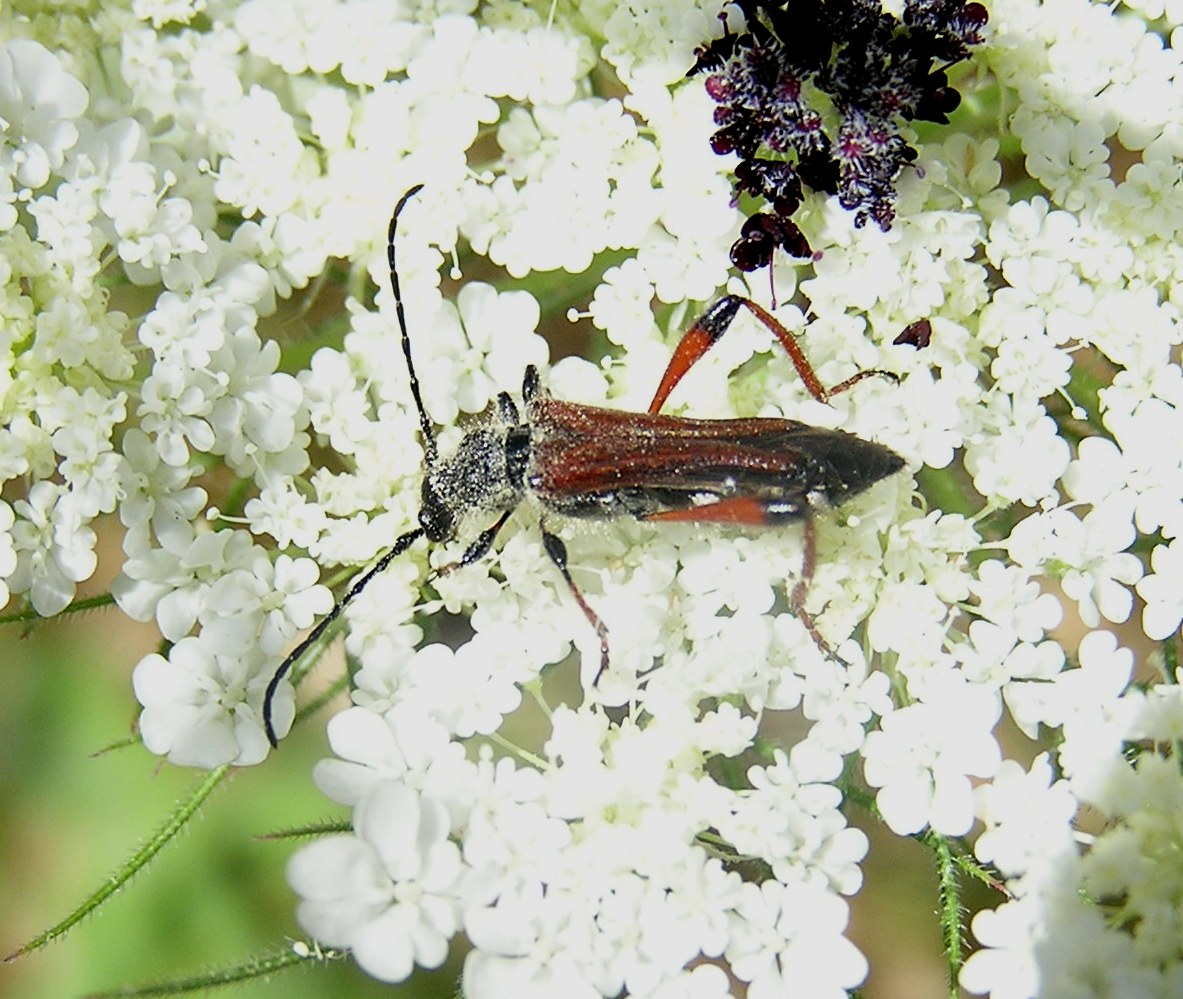
Helladia flavescens
(Brullé, 1832) Grammoptera
auricollis Mulsant et Rey, 1863
Parmena novaki
Sama, 1997
ssp. bipustulata
Steiner, 1975
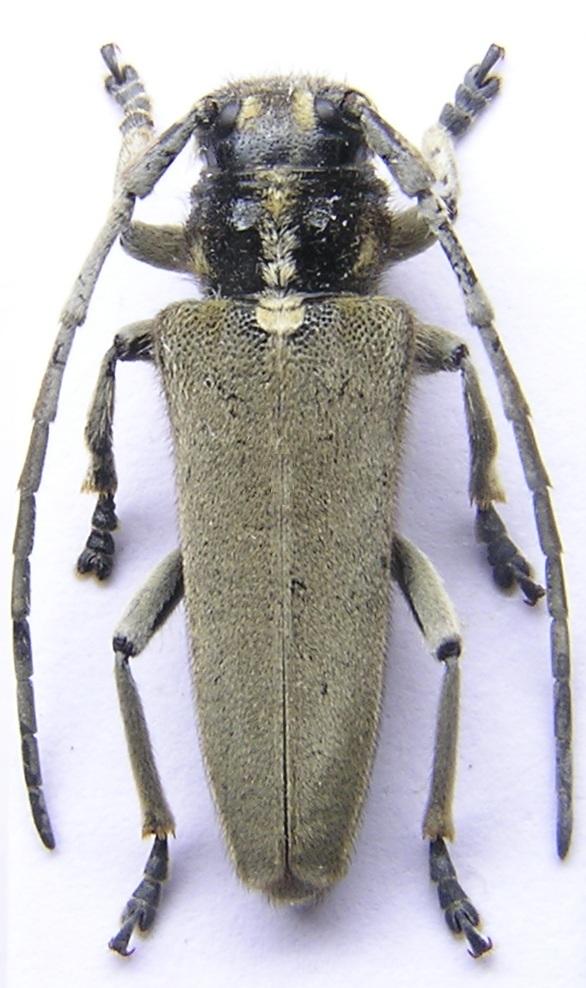
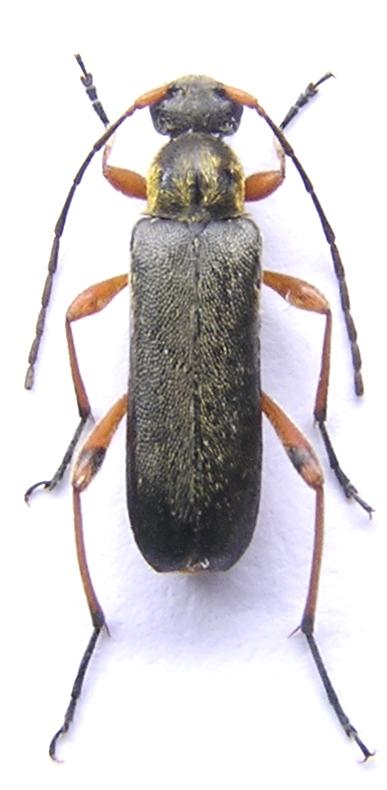
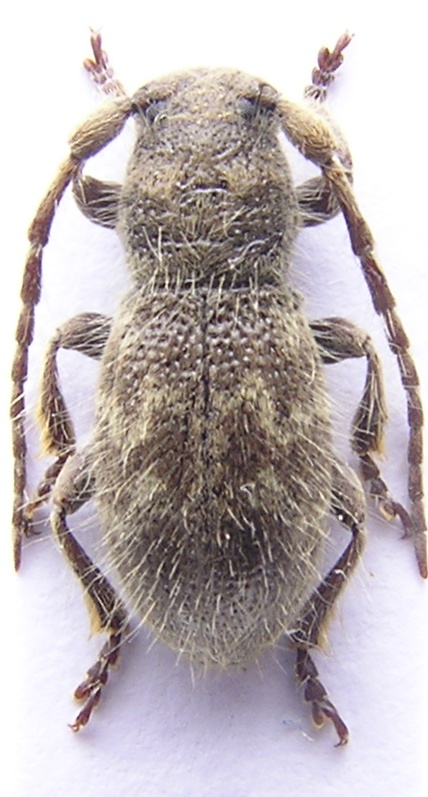
|
|
We
decided to move to the Taygetos mountains right from this beautiful
coastal locality, but the higher altitudes were permanently covered by
clouds, which watered local deep fir forests by periodic rain. Despite
the weather, we have found two adults of majestic Morimus asper
(Sulzer, 1776) ssp. asper (Sulzer, 1776).
We
also recorded the presence of huge endemic ground beetle Procerus
gigas ssp. duponcheli Dejean, 1831.
However, unfavourable weather made us abandon this area soon and we
headed towards Menalo mountains. We were attracted by local endemic
species, especially Mallosia graeca (Sturm, 1843) and
Anaglyptus luteofasciatus Pic, 1905.
Despite this very unfavourable weather - the sky was almost constantly
cloudy, there was very often foggy and very frequently rainy - we managed to
find a lot of interesting species, such as
Anastrangalia dubia (Scopoli, 1763) ssp.
moreana (Pic, 1906) (endemic subspecies),
Callimoxys gracilis (Brullé, 1832), Stenhomalus bicolor
(Kraatz, 1862), Brachypteroma ottomanum Heyden, 1863
and Grammoptera auricollis Mulsant et Rey, 1863 ssp.
bipustulata Steiner, 1975, all of them on blossoming hawthorns
(Crataegus sp.).
Catching a few adults of endemic and rare species Anaglyptus
luteofasciatus Pic, 1905
was the greatest success for us. We beated them from blossoming
hawthorns.
We
have also seen several galleries and exit holes of a quite rare species
Rhamnusium graecum Schaufuss, 1862 ssp. graecum
Schaufuss, 1862 in the cavities of maple trees (Acer sp.).
With the help of cigarette smoke we managed to catch a few adults
of this Greek endemic subspecies. Adults of Cortodera
differens
Pic, 1898 (=
steineri
Sama, 1997) – to us already familiar from the
vicinity of cities Tripoli and Sparta – were sitting in a quite large
amount on their host plants, everywhere on mountain meadows.
In the foothills of Menalo range we observed many adults of impressive cerambycid species
-
Mallosia graeca
(Sturm, 1843). This up to 3 cm long endemic species occurred on its
host plant – sea holly (Eryngium
sp.).
The non-volant and wingless female were crowling clumsily on the
ground among host plants or sitting at the base of their leaves,
while the smaller and brisker males were actively flying around and
searching for females. We
have also observed females laying eggs into the soil near the root
of the host plant.
-
Morimus
asper (Sulzer, 1776)
Cortodera
differens
Pic, 1898 (=
steineri
Sama, 1997)
-
ssp. asper
(Sulzer,
1776)
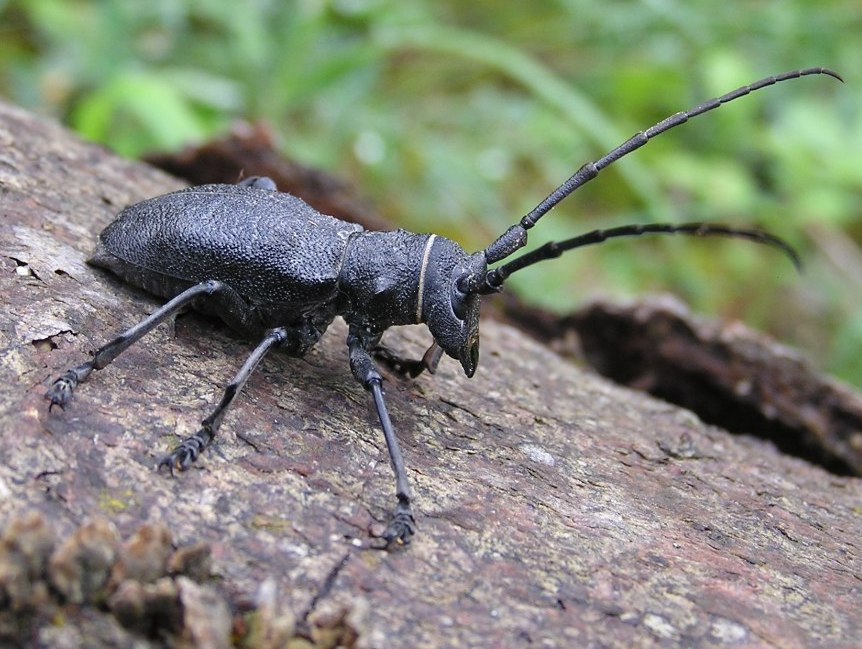
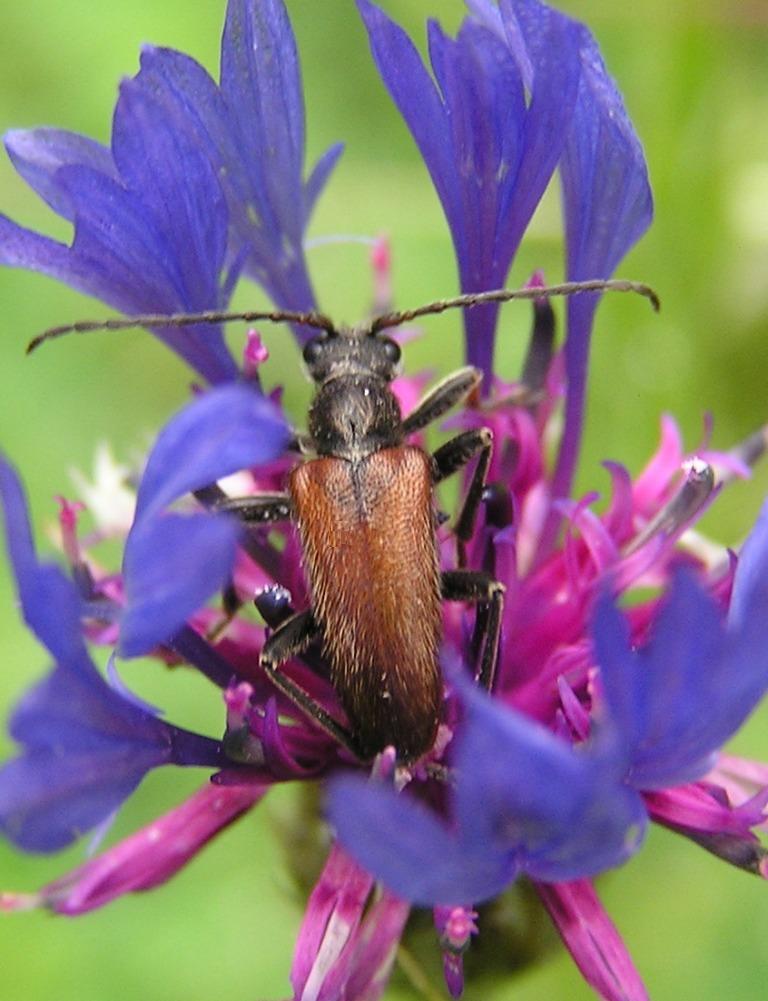
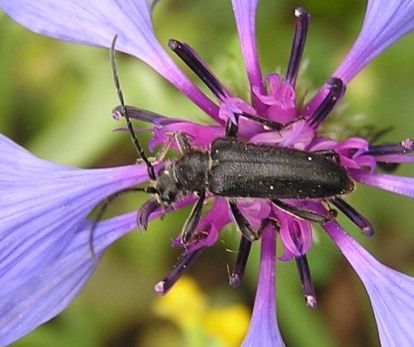
Anaglyptus luteofasciatus Pic,
1905 Mallosia graeca (Sturm, 1843)
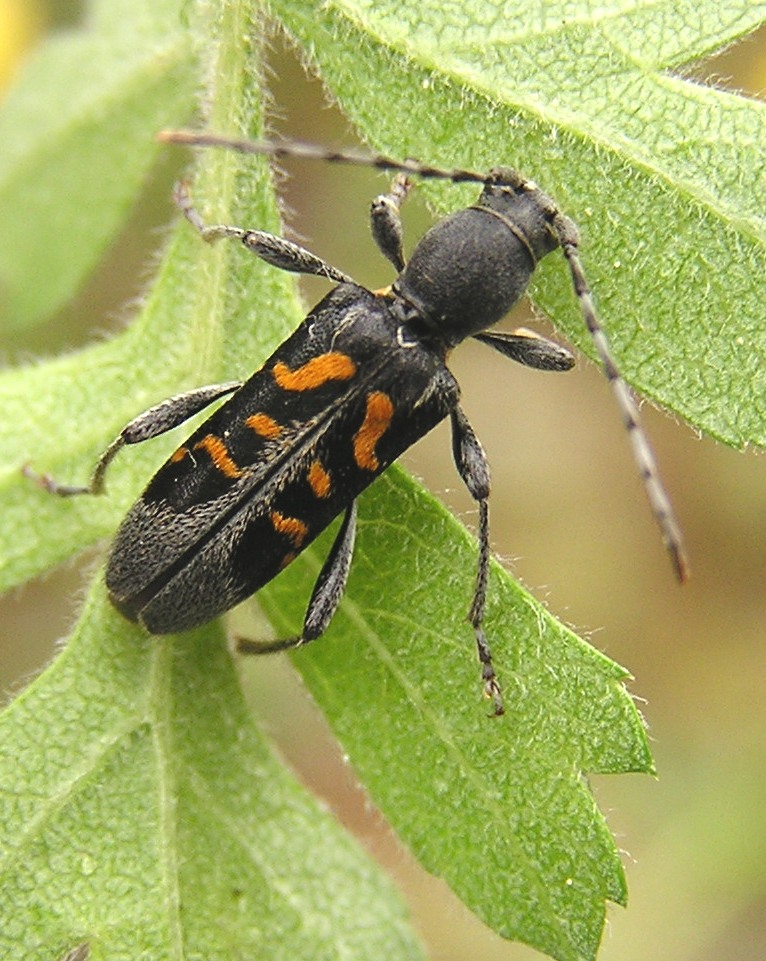
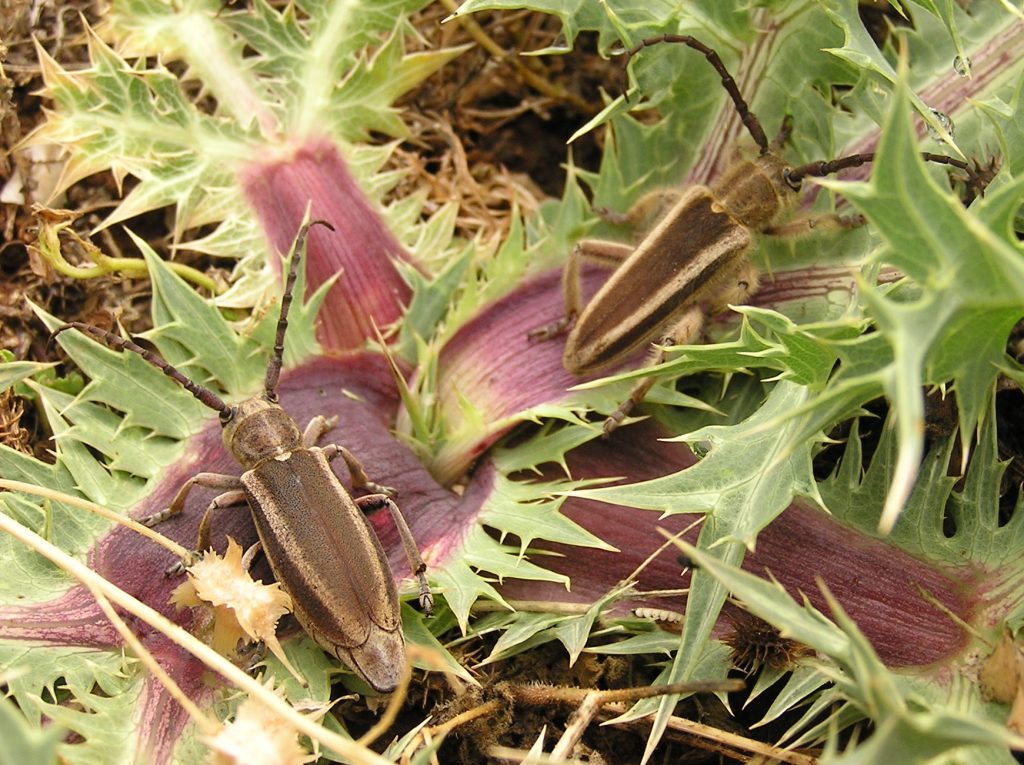
Mallosia graeca (Sturm,
1843) - female Mallosia graeca (Sturm, 1843) -
male
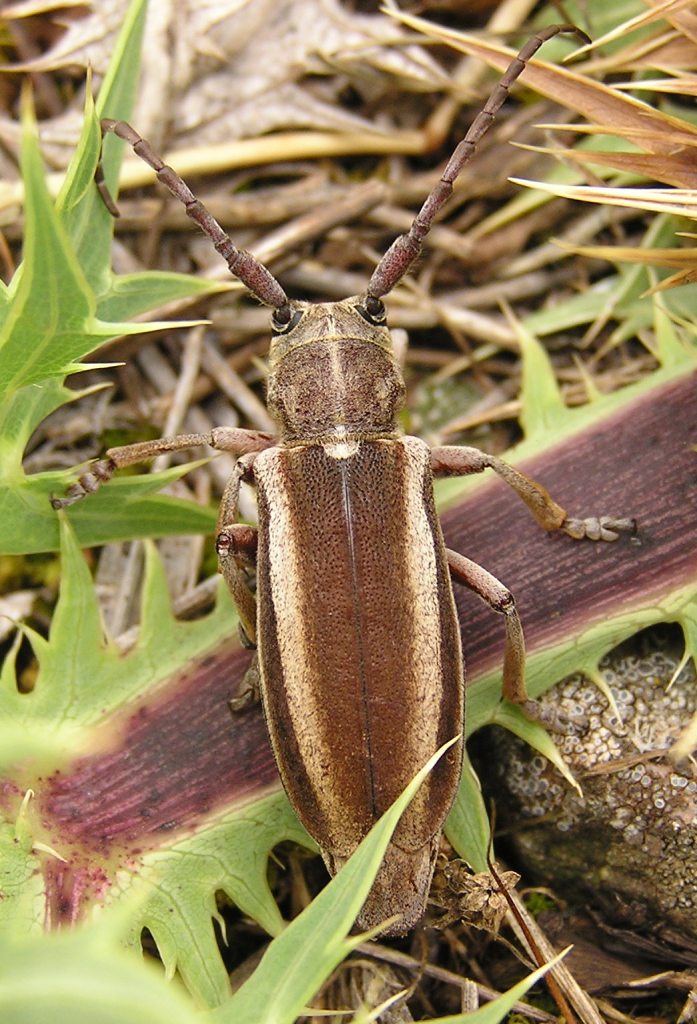
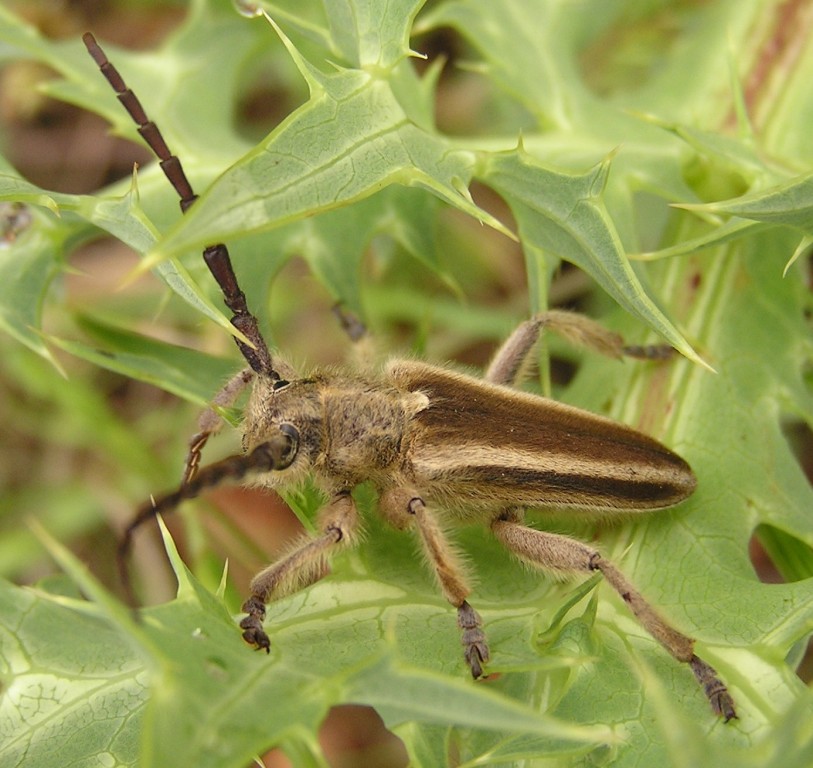
Our
expedition could contentedly resume its results
after
fourteen days.
During that time, we have observed and caught more than a hundred of
species of family Cerambycidae, which is a quite staggering
number.
Our
expectations were fulfiled by one hundred percent.
We
recorded a lot of very rare species, even in larger numbers.
It
has appeared again, that Peloponnese - as many other areas of Greece and
the entire Balkan peninsula - offers to the entomologist many
interesting places, where lives the richest spectrum of beautiful insects.

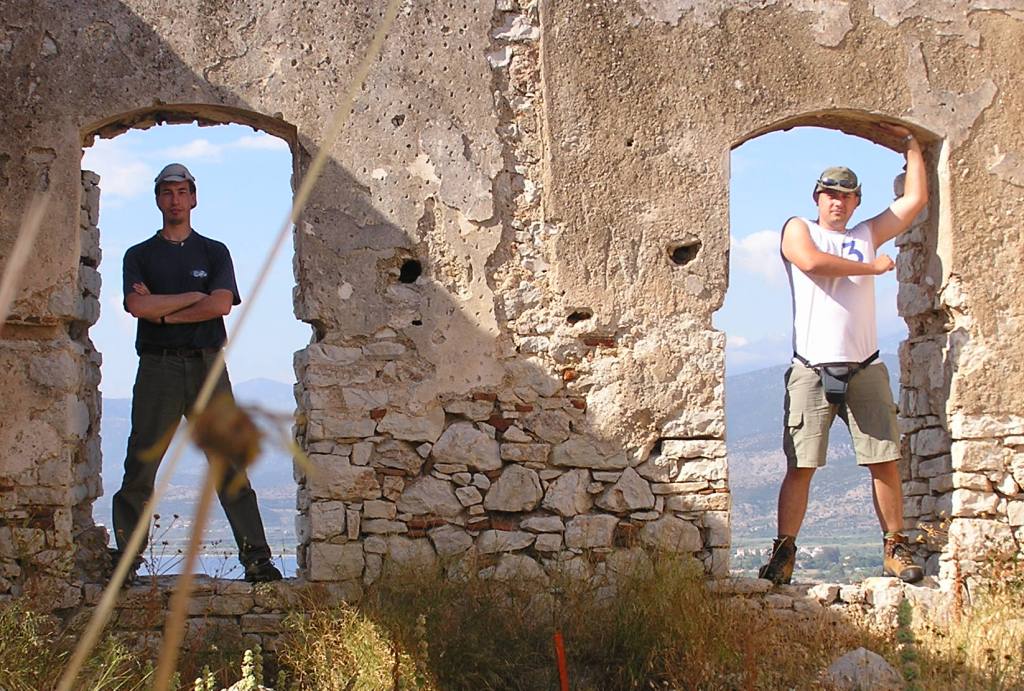 |